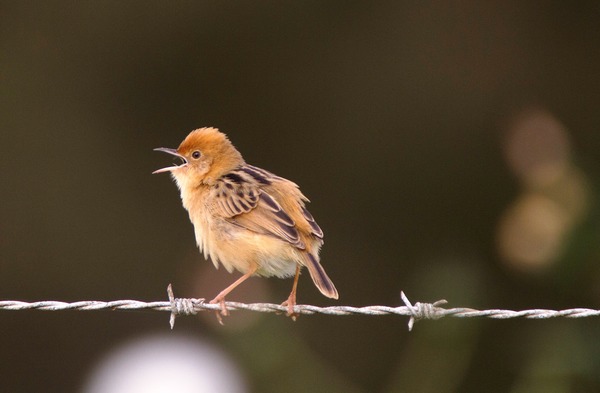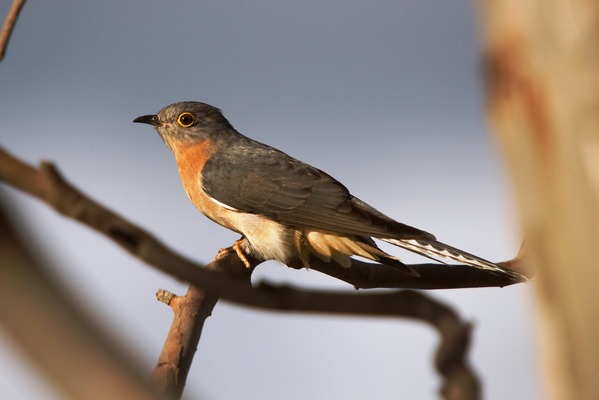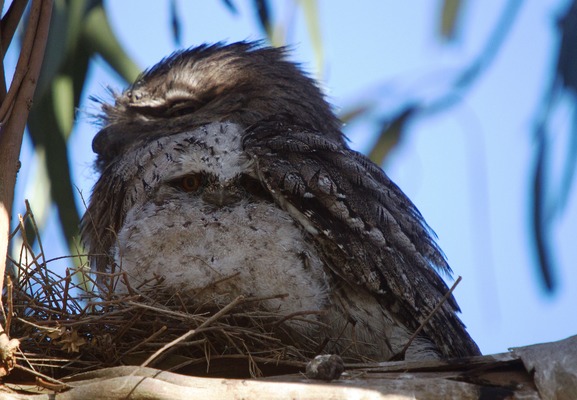Slowly but surely the the weather is improving and the sun has been trying to shine, which makes going out and about much more pleasant.
Unfortunately the one day this fortnight that I did plan an outing was very dull and not very conducive to taking great photos.
I went with Denis Sleep, who takes the most beautiful bird photos, to Lake Murdeduke, which is near Winchelsea. Last year at Lake Murdeduke, a buff-breasted sandpiper (a rare migratory shorebird) showed up at Lake Murdeduke, so we thought that we might spot something unusual there, even though there haven’t been too many migratory shorebirds around as yet.
On the way to Winchelsea we stopped off at Hospital Swamp, Connewarre, where I’d seen some cuckoos a few days before. Sure enough there were several Horsfields bronze-cuckoos and pallid cuckoos on the farm fences, and they were having a feast on hairy caterpillars. There was also a very silent fan-tailed cuckoo in the trees adjacent to the car park.
After leaving Hospital Swamp we spotted a pair of beautiful Australasian shovelers swimming in a farm dam, which was an unusual sight.
At Lake Murdeduke there were small flocks of sharp-tailed sandpipers and red-necked stints, so the migratory shorebirds have started to arrive. Perhaps the highlight of the walk around Murdeduke was observing six banded lapwings, including a pair who were nesting. Banded lapwings are very pretty birds, and don’t seem to swoop as aggressively as masked lapwings.
The banded lapwing is a medium-sized wader, that has short, dark purplish and red legs. They range from 25cm to 29cm in length. Their bill is a pale yellow with a black tip with a small red wattle at the base, in fact the red wattle and wing spurs are more prominent in males than females. These birds also have a black cap, a white throat and underparts, white eye stripes and a black breast band extending up each side of its neck to its face. The bird in Denis’s photo has quite a prominent wattle on the face so I’m assuming that the bird is a male banded lapwing.
At Lake Murdeduke Denis heard a brown songlark calling. This is a bird that has eluded me, so I was quite happy at the prospect of seeing one. However the bird was heard but not seen – a good excuse for a return visit.
I’ve also had a few drives to my Curlewis purple patch, also in search of better photos of Cuckoos. Alas I haven’t achieved my aim of better photos, but have seen European goldfinches, whistling kites, black kites, golden-headed cisticolas, cattle egrets, a freckled duck, a pair of brown falcons, and a beautiful brown goshawk that was in prime photo position until just before I clicked the shutter. Darn it!
I’ve seen a few nests lately. I love looking at nests because of craftsmanship that goes into building and weaving them. I saw two nests that looked like raptor nests and unfortunately I realised that the birds that were occupying the nests were little ravens. Kevin sent me a wonderful photo of a black-winged stilt on a nest that was taken at Port Fairy.
I received an email from Ocean Grove residents Ros and Andy, who have a tawny frogmouth nest in a gum tree in their front garden. I checked out the young frogmouth that was being protected under the parent bird’s wing. Thanks Andy and Ros for sharing your garden residents with me.
None of the bird teams won the AFL Grand Final this year, but it was great to see the mighty Tigers take the premiership after a long drought.
The Cats will have to try again next year, as well as the Eagles, Crows, Magpies and Hawks.
– Jen Carr, jennifer.carr6@bigpond.com









